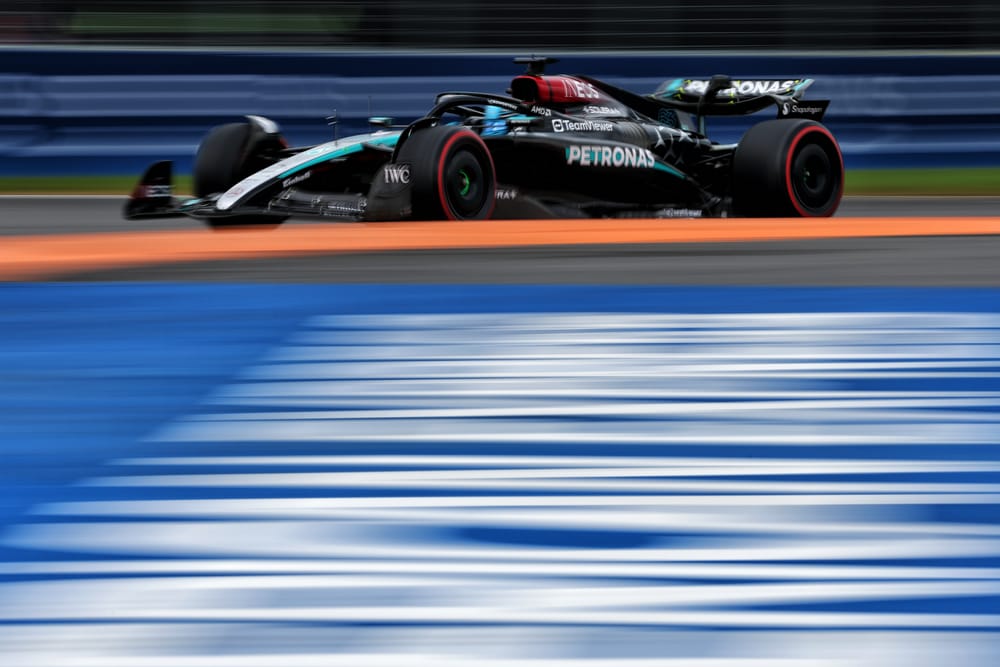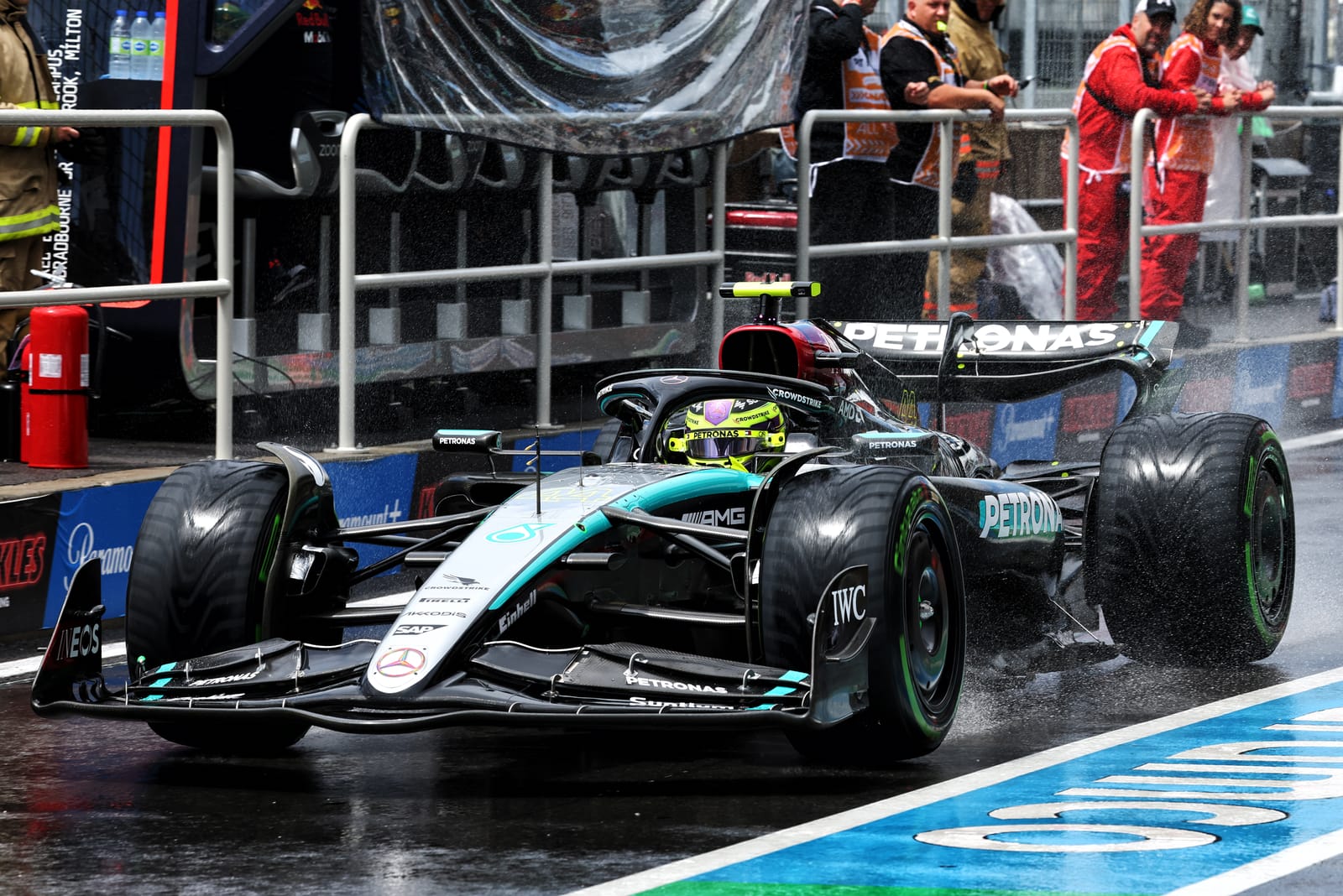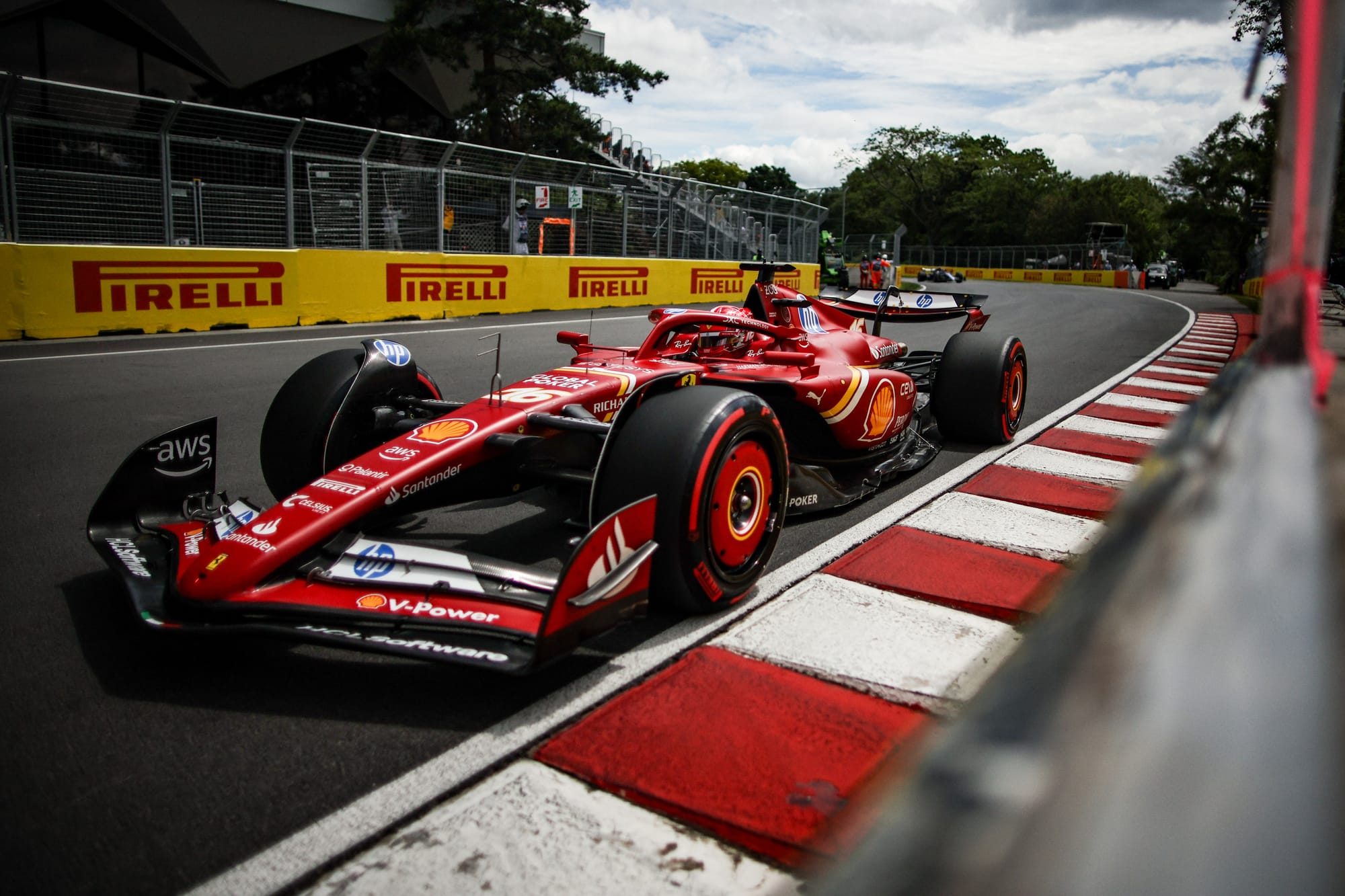Up Next

It’s rare that the fastest two Formula 1 qualifiers set an identical time but it happened in Montreal for the first time since Jerez 1997, with George Russell getting the nod over Max Verstappen for Canadian Grand Prix pole on account of having done the 1m12.000s first.
There are a lot of moving parts to this story. The expected heavy rain never amounted to anything more than a drizzle, with slicks run by everyone throughout and so that outcome is a fair representation of where the Mercedes, Red Bull and McLaren are at (Lando Norris’s third-fastest time was just two hundredths of a second off).
So that poses a few questions.
Is Mercedes finally back?
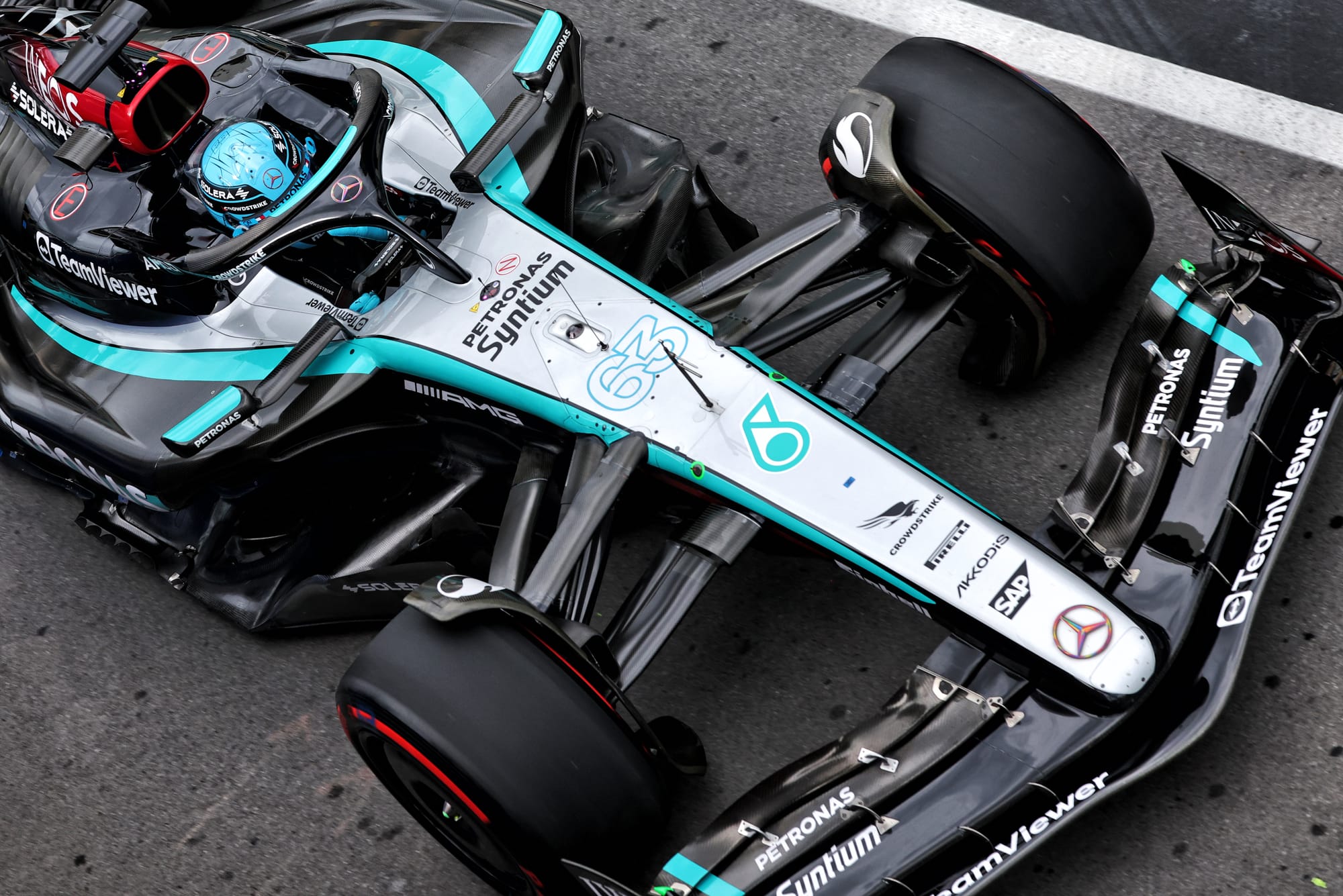
The new front wing introduced on Russell’s car in Monaco and used on both cars here from FP3 onwards has been specifically designed to widen the set-up window of the W15.
With the original wing you could have good high-speed rear grip but understeer at low speed. Or a little less understeer at low speeds but at the expense of high-speed stability.
As Mercedes’ understanding of how to exploit this ground effect ruleset has evolved, so it has been able to run the car ever-lower. But as it did that, a new problem emerged: the front wing became too powerful at higher speeds as it ran low enough to be working in ground effect itself.
The sudden big increase in downforce which comes with the last few millimetres of ground effect gap works just as spectacularly on a front wing as an underfloor tunnel. Which at the low ride heights Mercedes was now able to run was giving a big balance shift forwards at high speeds.
To counteract that meant reducing the flap angle which at lower speeds - when the wing was no longer in ground effect - meant it wasn’t powerful enough. Too powerful at high speed, not powerful enough at low.
The new wing has vastly improved that. But the corner speed range at Montreal is small, so let’s hold off on being too definitive. If it works on the much bigger corner spread range of Barcelona, Mercedes can be a bit more confident.
But for now, this weekend at this track, with the lack of set-up time because of the rain of Friday, it’s flying. Realistically it’s the fastest car around here. Both Russell and Lewis Hamilton dipped into the 1m11s in Q2. No one else did that in any of the sessions.
Russell’s pole time was set on used tyres on his first Q3 run. He was expecting another 0.3-0.4s from the new set he ran for his final run. But the track was slower. The wind had increased markedly - and it was a full-on headwind down the long straight between the hairpin and final chicane. Plus the tyres weren’t quite in the same happy place in the changing conditions.
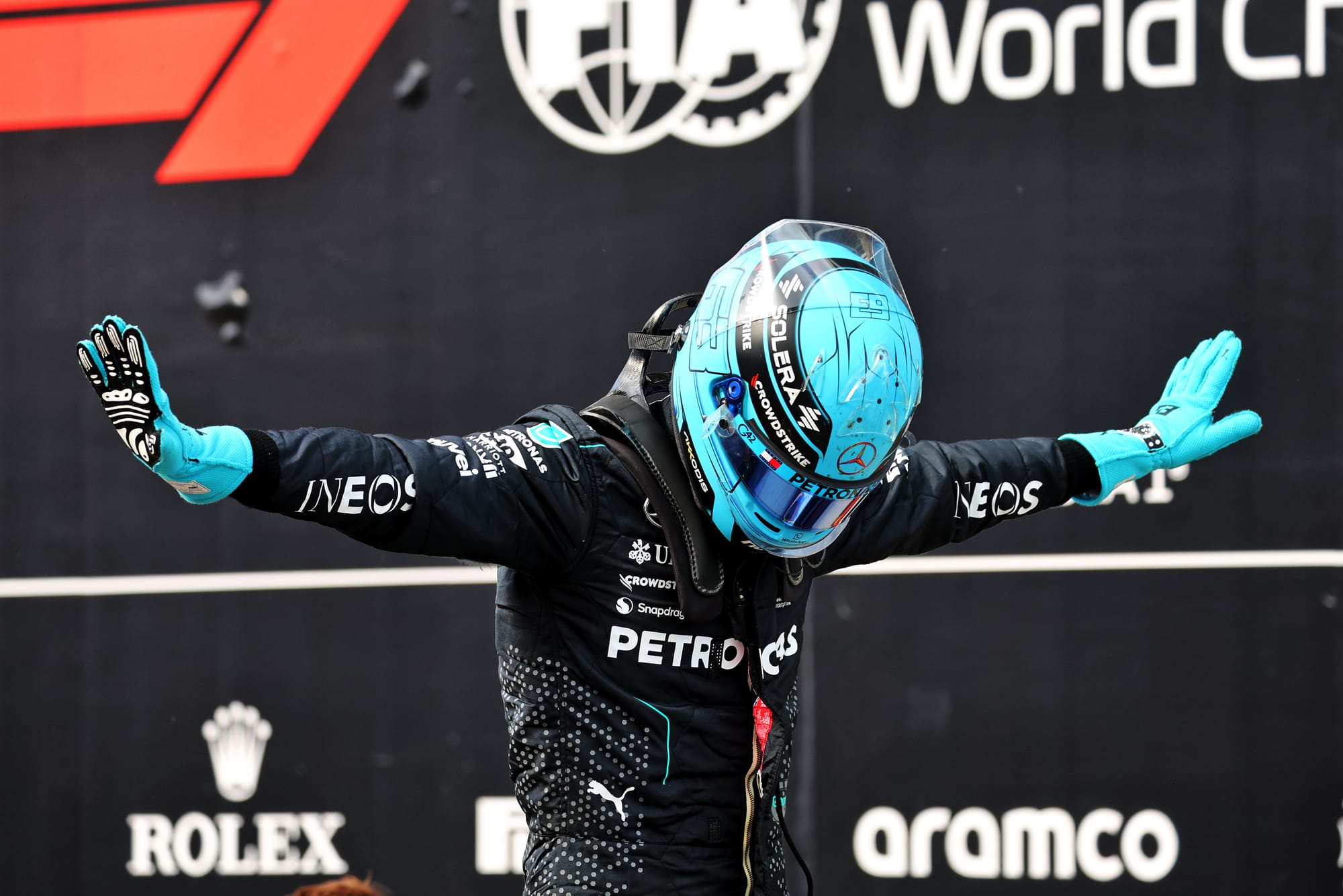
“It’s felt awesome all weekend,” said Russell. “In fact that Q3 was the worst it’s been. It was just turning in really nicely.
“We had a lot of understeer before [with this car]. Last year we had a lot of oversteer. We’ve been trying to find the halfway house. It’s really a sense of relief to see it translate.
“The conditions kept changing and the tyre didn’t feel quite right at the end. But in Q1 we didn’t need to use two sets of softs. In Q2 we didn’t need to [but did]. Every lap we did the car felt really good.
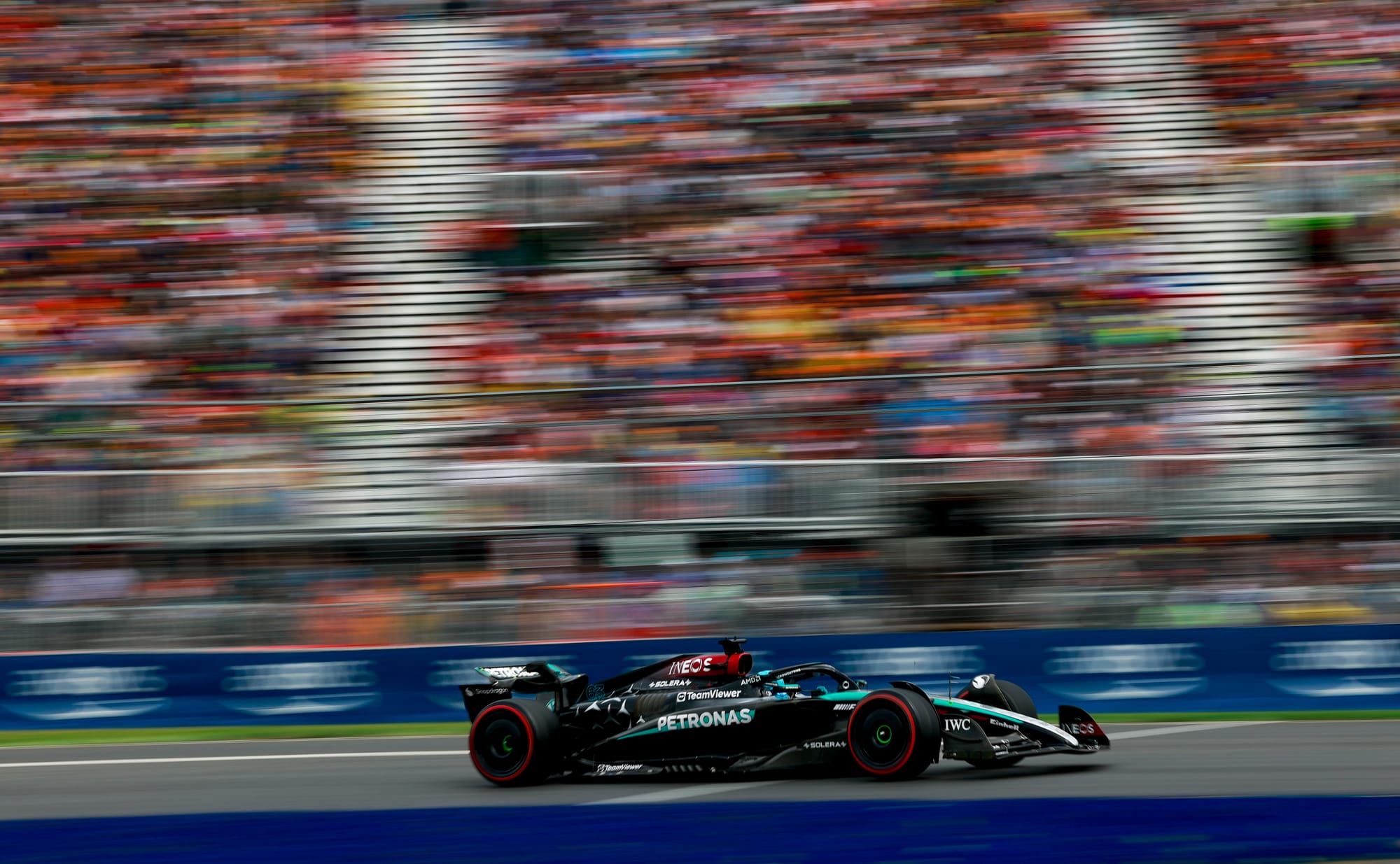
“I think we’re homing in on the sweet spot finally.
“We need to see in the next few races but it’s looking good so far. We think we’ve got more to come.”
With a car better balanced over the whole lap than it’s ever been, both drivers were able to adopt the sort of attacking style which pays off so well at this track. The benefits of that snowballed, as Russell intimated: “The wing has brought more performance than we initially expected.”
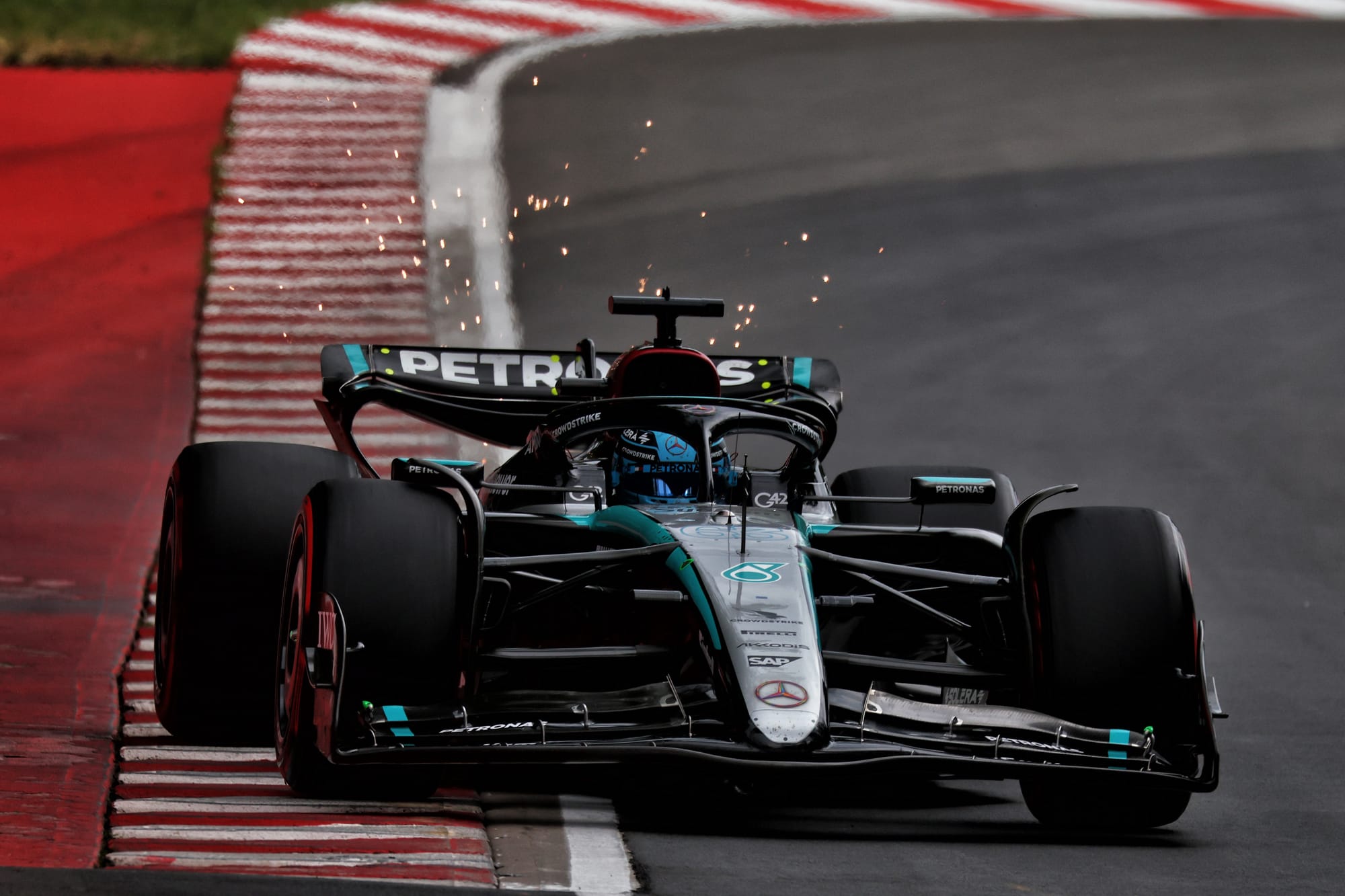
Let’s wait until at least Barcelona in a fortnight to see if the W15 is suddenly a Red Bull match. Not only because the corner spread range of Montreal helps the underlying problem the Mercedes has faced thus far. But also because the way you have to attack the kerbs here is not well-suited to the limitations of the Red Bull.
“We ended up finding a decent balance,” said Verstappen. “We are still struggling with the same things we did at Monaco, but around here there’s more aero involved, so it didn’t affect us so badly. On pure pace here we are second. I couldn’t have done the times they did in Q2.”
Amid the 0.000s difference between the Russell and Verstappen laps it was easy to underappreciate just how close McLaren was here too. Two hundredths was Norris’ deficit, with Oscar Piastri merely a tenth down in fourth.
The McLaren was faster than anything in the middle sector (the chicanes of Turns 6-7 and Turns 8-9), but slower through the first sector (where the Red Bull was strongest). The Mercedes was strong everywhere and faster than either of its rivals down the long straight between the hairpin and the final chicane.
What was up at Ferrari?
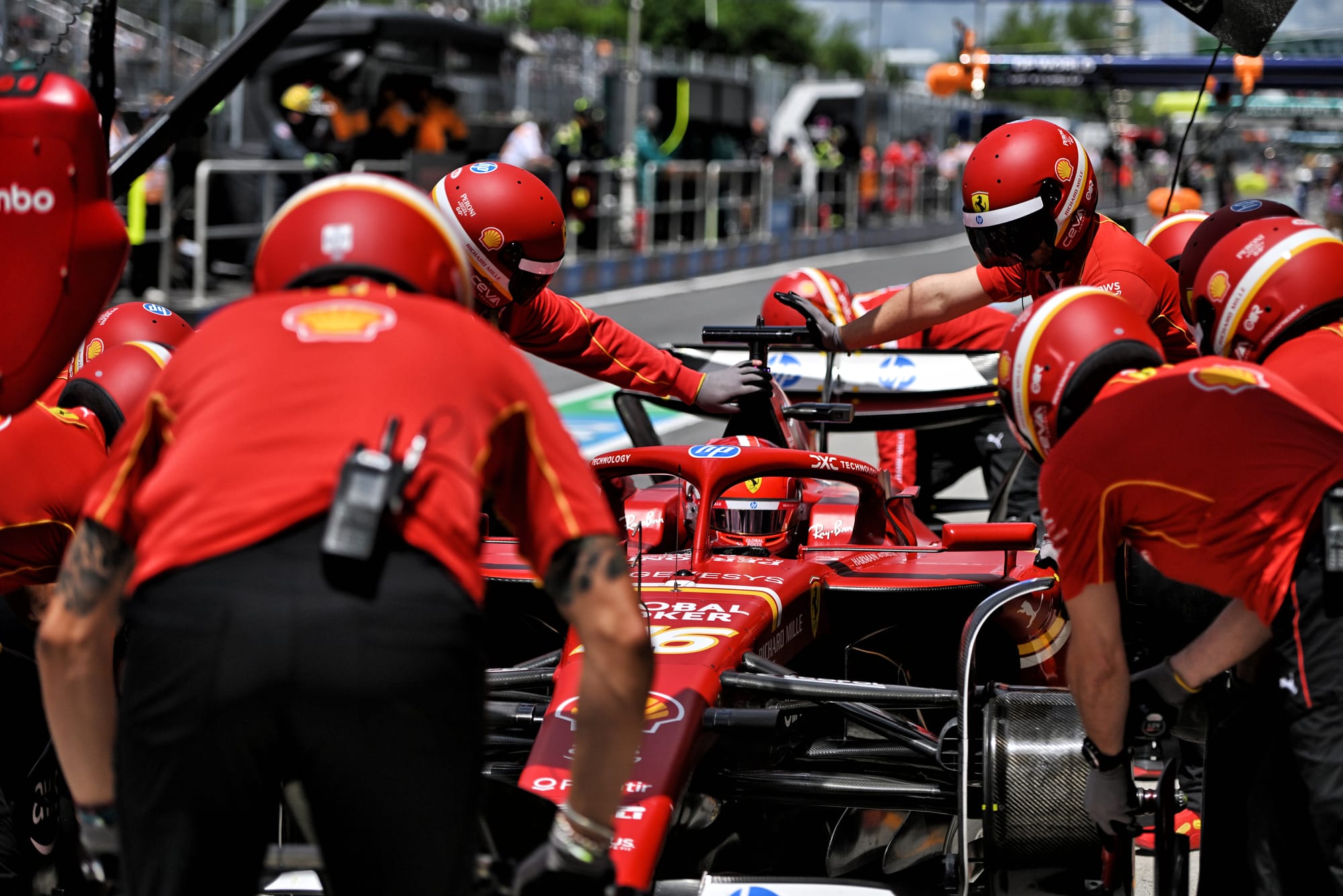
Coming into this race there was reason to believe the Circuit Gilles Villeneuve would not be the ideal layout for the Ferrari’s power unit, which is better suited to constantly punctuated running than long stretches of all-out.
But that disadvantage would be small, and certainly nowhere near enough to explain why neither Charles Leclerc nor Carlos Sainz made it through to Q3.
It seemed to be about under-temperature tyres at the beginning of the lap.
“Over 50% of our gap over the lap was at Turn 1,” as Fred Vasseur pointed out. “We are just not turning on the tyres.”
Certainly the smooth new track surface made this a more difficult task than previously and seems to have played a part in catching Ferrari out.
Sainz was set to be 0.3s faster than he was but made a mistake into the final turn. Both drivers did their second Q2 runs on used tyres, having run their new sets on the first runs (as did the McLaren drivers).
“We could see there was a possible shower coming,” explained Sainz, “and we thought the track would be slower on the second runs.”
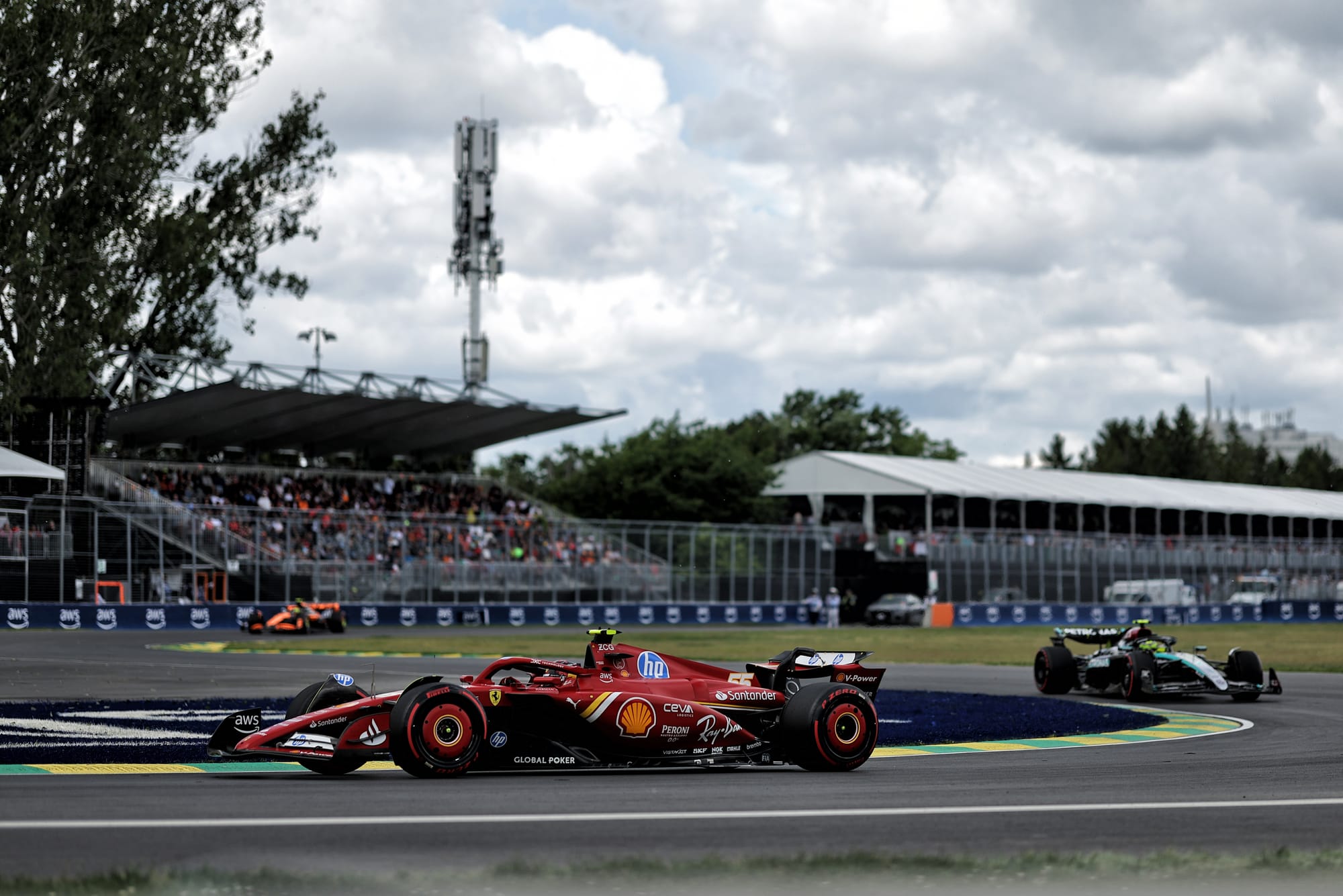
But again, that shouldn’t have been enough to deny Ferrari graduating from Q2.
“Yes there was a lack of grip,” said Sainz of the tyre temperature issue. “If we had done everything perfectly with the tyres and I did a cleaner last corner it was possible to get through.
“But it was always too tight and these things only became a problem because the car wasn’t quick enough.”
How good was Russell's lap?
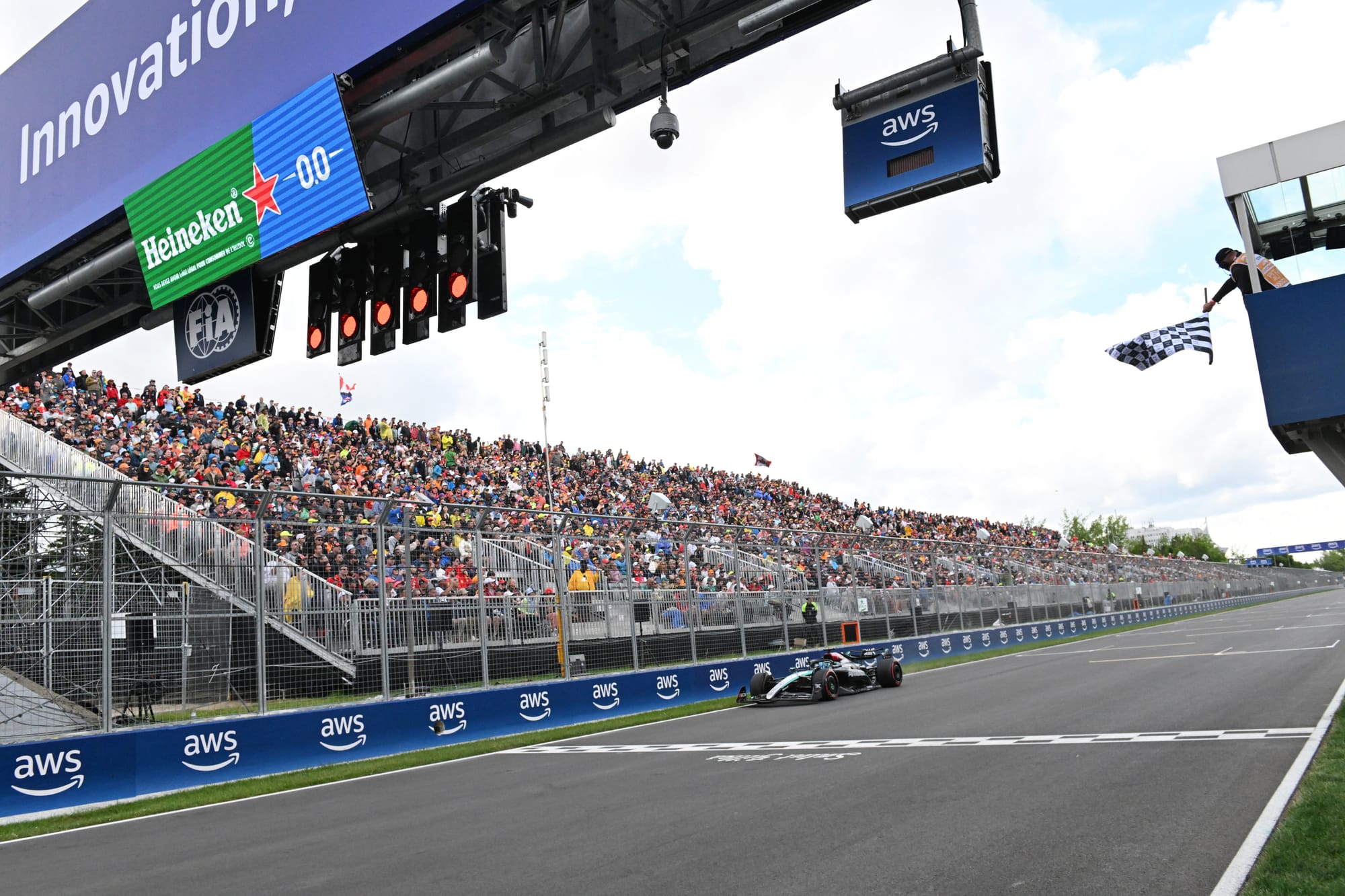
Russell picked up a distant tow from Alex Albon’s Williams on the straight between the hairpin and final chicane. The GPS traces suggest it bought him just under 0.1s. So without it, he’d have lost pole to Verstappen and been slower than Norris too. He’d have been third on the grid a bare few thousandths clear of Piastri.
But that was with the Mercedes at its worst. As recalled, no one got anywhere near the 1m11.742s Russell had recorded in Q2. Plus, he was conclusively faster than team-mate Hamilton who qualified 0.28s slower, seventh-fastest, behind Daniel Ricciardo’s RB and Fernando Alonso’s Aston Martin.
Hamilton had been devastating in FP3 earlier in the day, no one anywhere near, not even Russell. Almost all of his advantage over Russell in that practice session was coming in Turns 1-2.
“In FP3 Lewis was absolutely flying,” recalled Russell, “going significantly quicker than me. I had to look at his data to see what he was doing differently and that helped me hugely.”
“The car felt great this morning,” said Hamilton. “But as soon as we got to qualifying the grip just vanished, just disappeared,” was all he could offer.
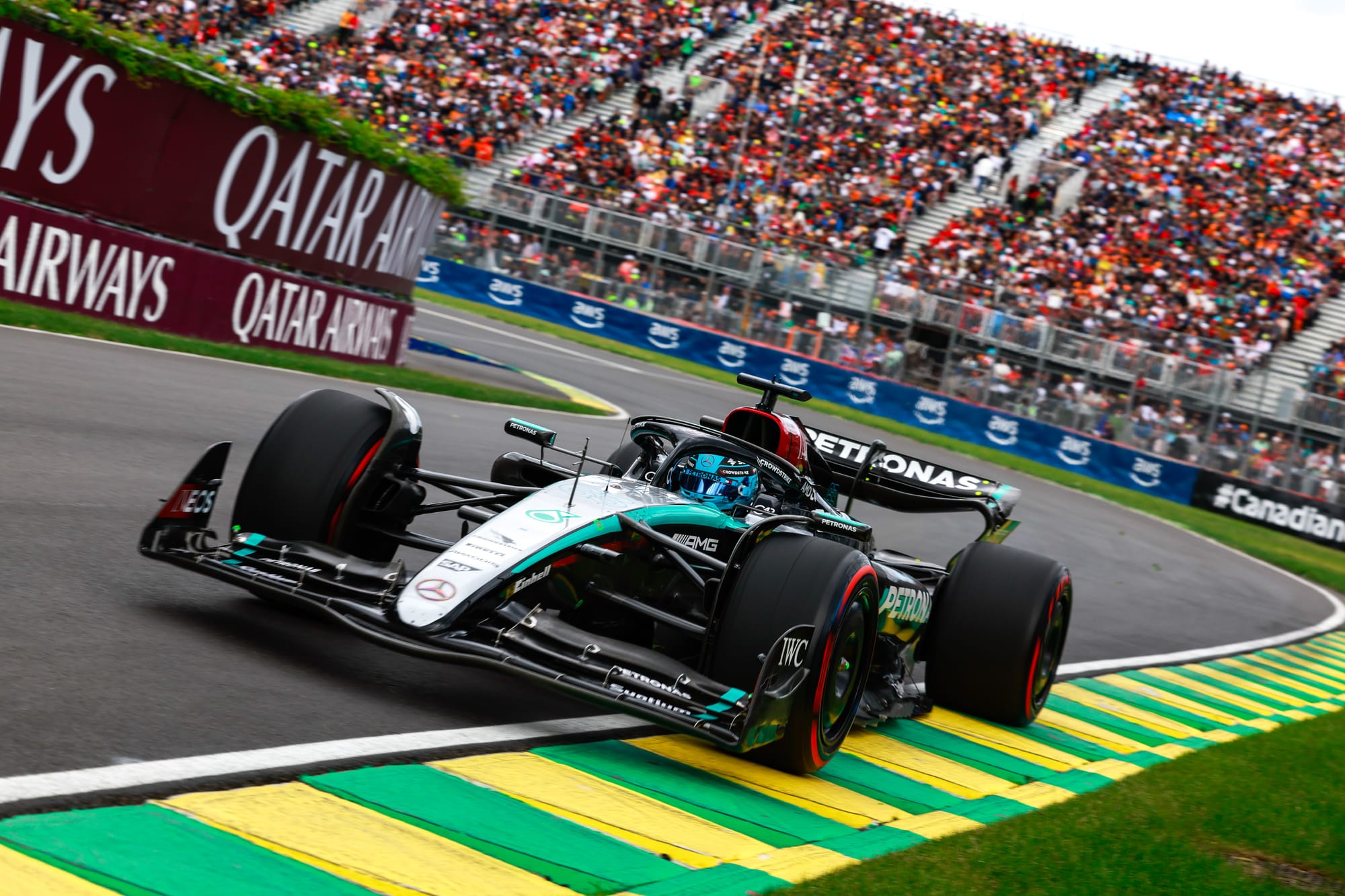
If we compare the identical laptimes of Russell and Verstappen in Q3, we can see they are achieved in quite different ways. The Mercedes eases clear of the Red Bull on the acceleration zones from the slow corners, the Red Bull (or Verstappen) takes time from it going into those corners.
Having taken some time out of Russell through Turn 3-4, Verstappen arrives at Turn 6 0.1s ahead. He comes out of the Turn 6-7 sequence 0.25s ahead. But in the run from there to the Turn 8-9 chicane the Mercedes claws almost all of that back.
Verstappen again takes time through the right-left of the chicane and again the Mercedes takes it back again on the exit, so they arrive at the hairpin pretty much level.
On the back straight the Mercedes stretches out its advantage, accentuated 0.1s by Russell’s tow from Albon.
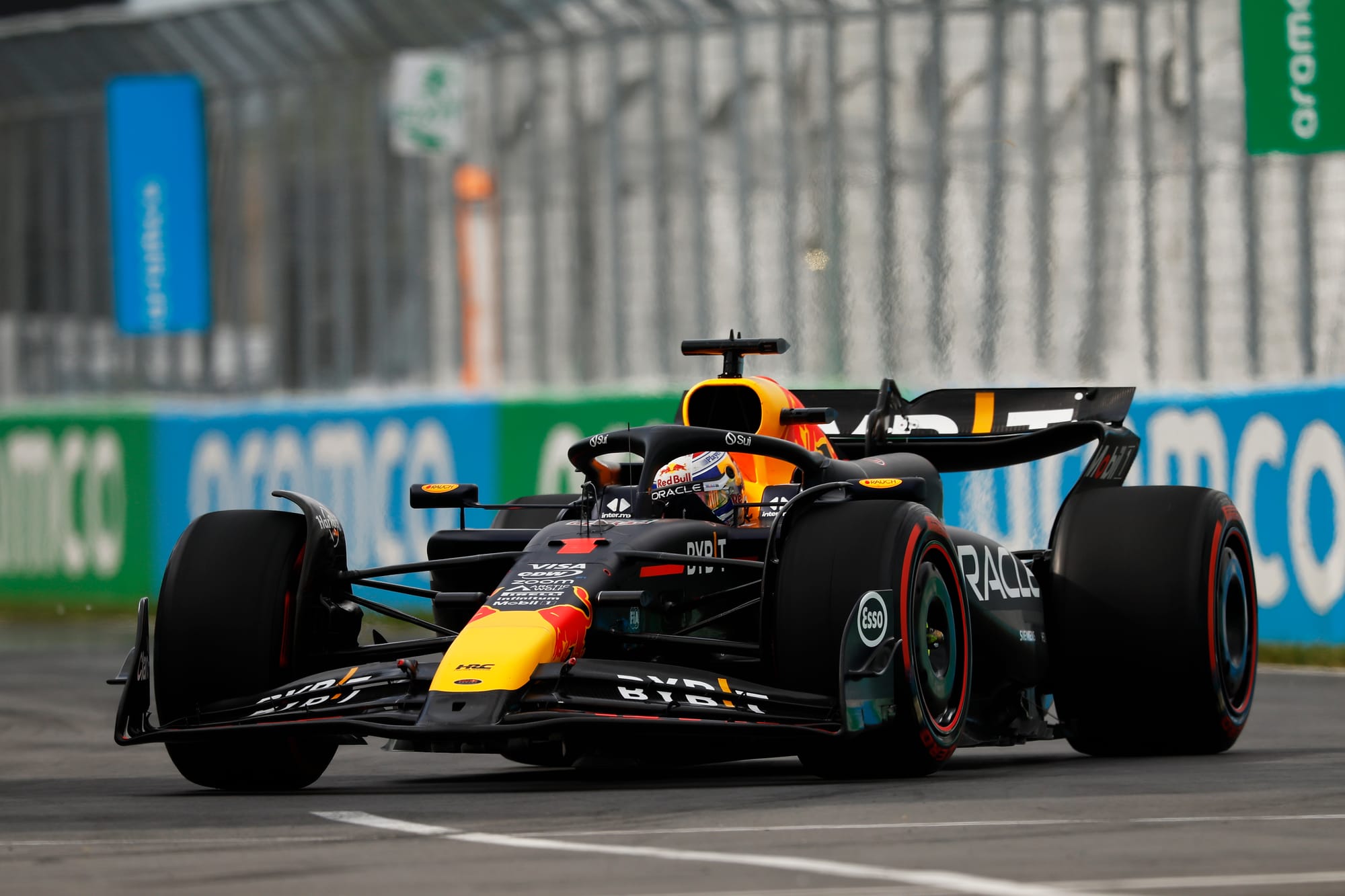
As they arrive at the final chicane Russell is 0.1s ahead. Verstappen gets that back with an aggressive run through that final demanding turn.
Some of those differences could just be the chosen wing levels for each car, the Red Bull appearing still to have a downforce advantage. But it could also be the Mercedes’ slightly shorter gearing being better-suited to punching it out of these particular corners better.
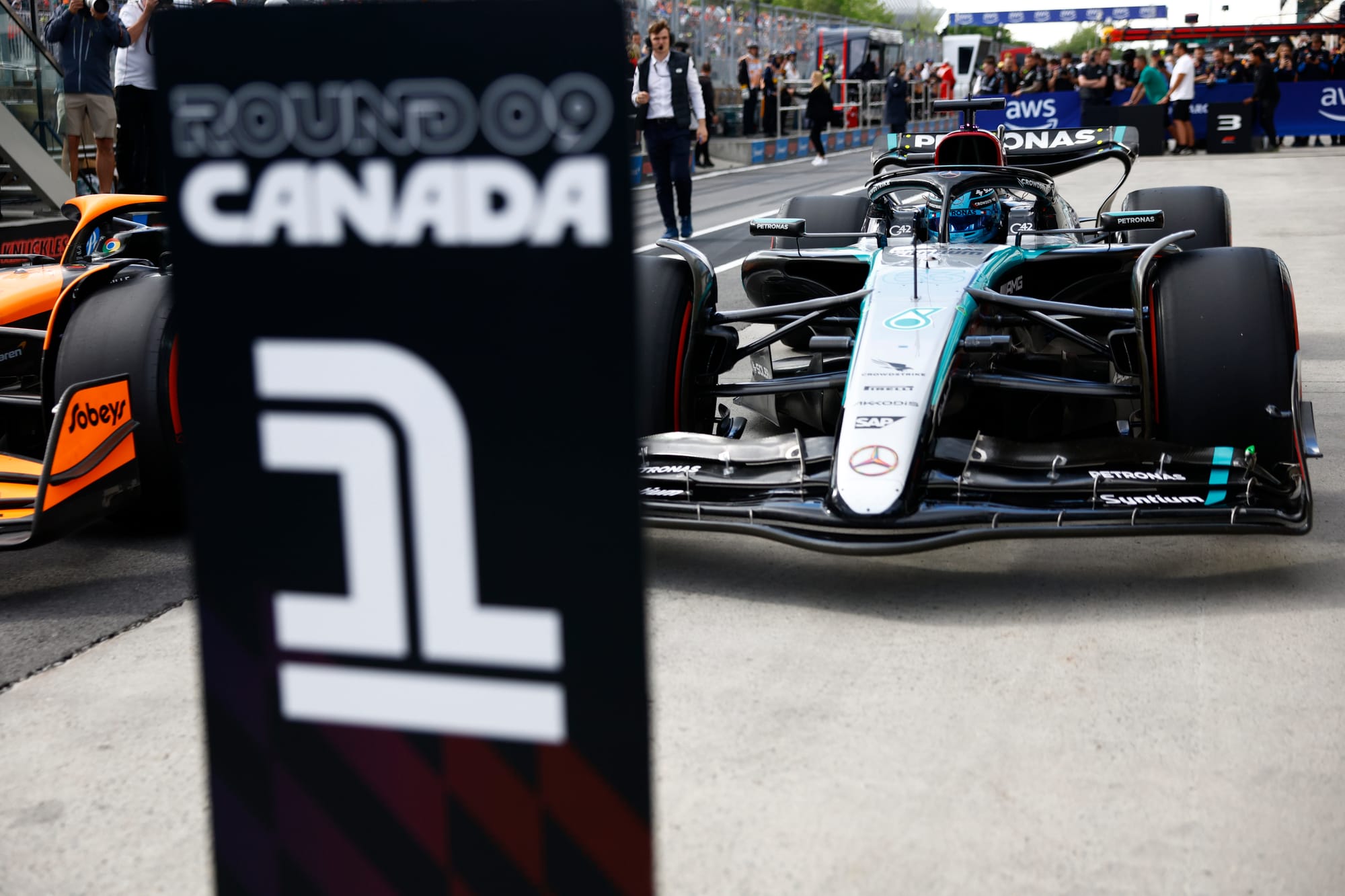
There could also be some driving technique difference to it too. Because comparing Russell’s lap with Hamilton’s, the pattern is similar to Russell vs Verstappen, in that Hamilton is taking more speed in, but more than losing on the exit what he’s gained going in. It looks like Russell is in tune with what the car is asking of him.
That just might be gold dust if the race is dry, because then it becomes all about controlling the tyre graining. This is a truly fascinating part of the season.


